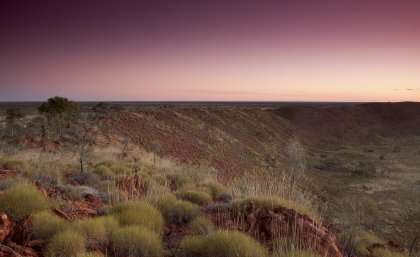Socio–economic conditions a critical key to wildlife protection

An international study involving University of Queensland researchers has found that protected areas have been largely successful at safeguarding wildlife within their boundaries, particularly in wealthier, more developed countries.
ARC Centre of Excellence for Environmental Decisions researcher Dr Megan Barnes said the socio-economic conditions of the country in which a park was located was found to be a more important indicator of success than other factors such as the protected area size, design or type.
"National Parks are the cornerstone of most country's conservation plans, so it's essential they work as well as possible," Dr Barnes said.
"It's important to tailor protected area management strategies to social and political conditions.
"Wildlife protection needs strong national governance to be successful," she said.
International Union for Conservation of Nature Head of Science Dr Tom Brooks said management had to target the full range of species to halt biodiversity decline."
The study is the largest ever investigation of wildlife trends in protected areas.
It examined 1902 populations of 556 species of birds and mammals in 447 protected areas across 72 countries.
"To make sure that parks achieve their conservation mission, we investigated what made them tick, what conditions resulted in improved wildlife trends, and what might create barriers to successful conservation in protected areas" Dr Barnes said.
She said the study highlighted the need for effective parks management- and that it was not sufficient to only create new parks to increase the area under conservation.
ARC Centre of Excellence for Coral Reef Studies researcher Dr Ian Craigie said there were still some protected areas where wildlife populations were declining.
"These need urgent support, especially in developing nations, if they are to successfully preserve their biodiversity in perpetuity," Dr Craigie said.
"Unexpectedly, we also found the largest-bodied wildlife were doing the best, the giraffes and buffalo had more positive populations than smaller species like jackals."
The study was part of an International Union for Conservation of Nature taskforce involving species experts from the Species Survival Commission and protected areas specialists from the World Commission on Protected Areas.
More information: Megan D. Barnes et al. Wildlife population trends in protected areas predicted by national socio-economic metrics and body size, Nature Communications (2016). DOI: 10.1038/ncomms12747
Journal information: Nature Communications
Provided by University of Queensland

















